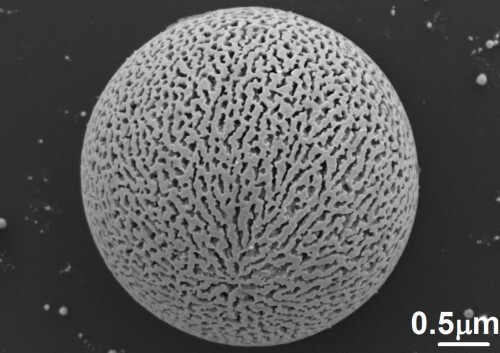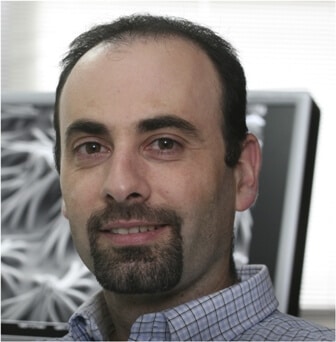A single crystal has many advantages, arising from the absence of nuclear boundaries typical of 'normal' crystals. These advantages include mechanical strength, high heat resistance and improved electrical and heat conduction

Researchers at the Technion succeeded in growing, for the first time, a porous gold single crystal. The research, published in the journal Nature Communication, was conducted by PhD student Maria Koipman Christosov under the guidance of Prof. Beaz Pokroy from the Faculty of Materials Science and Engineering.
A crystalline material may be polycrystalline or monocrystalline. A single crystal is a material made of atoms arranged in a long-term periodic order, while a polycrystal is a material made of single crystals. A polycrystal has different properties from those of a single crystal - a difference resulting from the different arrangement of the atoms.
A single crystal is not a human invention; It exists in nature in various substances. A diamond, for example, is a single crystal of carbon. In nature, there are organisms that are able to form single crystals with a 'non-crystalline' appearance, that is, their shape is rounded and they do not have straight whiskers. Sometimes these crystals are porous, i.e. porous. "There are crystals in nature with a very complex shape and no wigs at all, and they are actually a single crystal," says Prof. Pokroy. "For example, the spine of the sea urchin is a single crystal. Anyone who is not an expert on the subject will find it hard to believe that these forms are a single crystal."
Artificial monocrystals, produced (grown) in the laboratory, are usually characterized by a more 'crystalline' appearance, i.e. distinct fringing. Until now, almost no single crystals have been produced in laboratories that are as rounded and porous as in nature, since this production process is a very complex scientific-engineering challenge. "It is of course possible to produce 'crystalline' single crystals in the laboratory and then process them until they reach the desired complex shape, but this is an expensive and lengthy process, and in fact impossible when we want to get a porous crystal in the end. That's why a lot of effort is invested in developing ways to grow single crystals."
The Technion researchers' success in growing a porous crystal in the laboratory is based on an innovative process developed by the two: thermal treatment of thin layers of gold and germanium. This treatment creates liquid droplets that are tens of microns in size. Cooling the drops allows the gold to crystallize while creating one nucleation point, thus creating a porous single crystal. Thorough tests of the product, using the advanced equipment at the Electron Microscopy Center at the Technion, reveal that these are single crystals with channels tens of nanometers in diameter.
"Our motivation in developing the new technology is purely scientific," explains Maria Kuipman, "but it is clear that such materials have extensive application potential. A single crystal has many advantages, arising from the absence of nuclear boundaries typical of 'normal' crystals. These advantages include mechanical strength, high heat resistance and improvement in electrical and heat conduction."
Said research is being carried out with the support of the Russell Berry Institute for Research in Nanotechnology at the Technion, with the funding of the ERC grant given to Prof. Pokroy from the European Union, and in collaboration with the accelerator (synchrotron) in Grenoble, France.

Prof. Beaz Pokroy completed three degrees in the Faculty of Materials Science and Engineering at the Technion, and returned to it in 2009 after a post-doctorate at Harvard (supervised by Prof. Joanna Eisenberg) and at Bell Laboratories. "The stay in the USA was very interesting," he says, "and happily I got a job here in Israel in the end. Two other significant incentives to return were the prestigious Alon scholarship and the opportunity to be part of the Russell Berry Center at the Technion." He has only good things to say about the students at the Technion - "They are no less good than the students at Harvard." His team consists of nine graduate students.
Already in his doctorate, under the guidance of Professor Emil Zolotoyavko, Prof. Pokroy began to engage in materials engineering inspired by nature. "In many cases, nature surpasses us, the engineers, in terms of the products it produces. I focus on biomineralization - that is, learning the mechanisms by which minerals are formed by organisms. It is important for me to note that I study these processes not to imitate them, as is done in the field of biomimetics, but to get inspiration for useful engineering processes. That's why I call it Bio-inspired engineering. One of my goals is applied - to discover how to produce surfaces and composite materials with improved properties inspired by nature."
